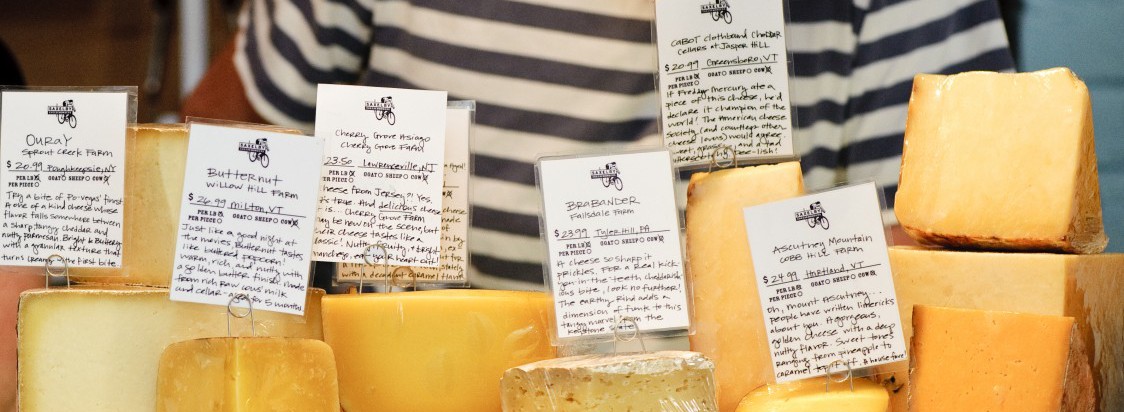The solstice has come and gone, it’s officially summertime, and if you’ve ever driven through the countryside in June, you know that summer means fields of green hay swaying in the breeze. Or it should anyways. 2019 has been a challenging year for cropping in many parts of the country. We talked with some of our cheesemakers this year to see what the cropping season has looked like so far for them.
Hay might not be the first ingredient you think about when you think about cheese, but good quality hay is the foundation of great cheese. The old adage you are what you eat applies to cows as much as it does to us. The vitamins, minerals, sugars, and starches in hay all contribute to the cow’s health and well being, and ultimately to the flavors found in cheese.

Jasper Hill Farm:
The beginning of June brought the first four day window of consecutive sunshine to Vermont’s northeast kingdom in 200 days. The crew at Jasper Hill Farm worked around the clock to crop 600 acres of hayfields in a span of four days while the sun was shining. In order to make good dry hay (an essential ingredient for raw milk cheesemaking) the fields must be mown when the grass is dry, and it has to stay dry while it is rolled up into round bales.
Jasper Hill Farm invested in the first hay dryer in the United States, the Calderwood Cropping Center, which allows them to dry bales of hay in a matter of 5-6 hours versus leaving the hay to dry in the fields which takes 4-5 days. The hay dryer was running around the clock this year as the crew scrambled to get the first cut in. Since the first cut happened a few weeks later than usual, the quality of the hay will be slightly different. The stalks of grass become woodier and more fibrous as they grow, which leads to feed that is high in fiber for the cows but lower in nutrients. Regardless, Jasper Hill’s industriousness in ‘making hay while the sun shines’ has allowed them to get a good start on winter feed for their herd, and for the production of Calderwood, our exclusive hay-ripened cheese.
Uplands Farm:
Cheesemaker Andy Hatch was lamenting the cold, wet spring in southern Wisconsin this year. In the late spring there were tremendous rains when the ground was still frozen, leading the rain to run off the ground and flood low lying areas – including large swaths of Nebraska and Iowa. The rain continued through May, and regular agricultural milestones got shifted back to later dates than usual. In Wisconsin, corn is usually in the ground by Mother’s Day and the first crop of hay is usually cut by Memorial Day. This year, everything was a few weeks behind, and the first cut of hay did not happen until June 10th. When they did get it cut, the quality of the hay was not great as it had already gone to seed. For seasonal cheesemakers like Uplands, who only make cheese when their cows are out on pasture, it’s not such a big deal. This hay is only fed to the cows in the wintertime when cheese is not being made. But for cheesemakers who rely on this hay to make cheese with, it can have adverse effects on cheese quality.
On the bright side, the pastures are growing slowly and consistently, which is great for Uplands’ rotational grazing practices. The cows also love the cooler weather, and will make more milk when they are not too hot and not stressed.
Meadow Creek Dairy:
The Meadow Creek crew mowed their first hay on June 14th. They look at hay slightly differently as they use it as a tool to harvest surplus pasture and improve pasture quality for the next grazing round. The pasture is the most important thing to Meadow Creek so they don’t milk off hay but use it to feed the cattle during the dry period when they are not producing milk.
That said, so far this year the weather in southwestern Virginia has been pretty good weather for hay. Their first cut happened in mid-May, which was earlier than usual, as they had a run of hot weather with not a lot of rain. In June there has been more rain so they started making hay again, though they did lose three to four acres of hay to rain, as happens every year, but is not a make or break situation. Since purchasing a second farm a few years back Meadow Creek has been able to produce enough hay (700-800 round bales at 750lbs each) to feed their cows year round without buying in anything extra from the outside!

